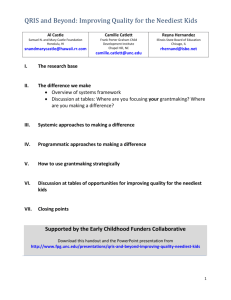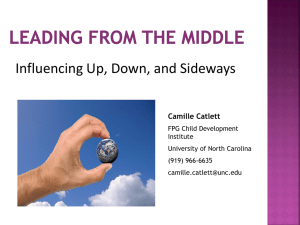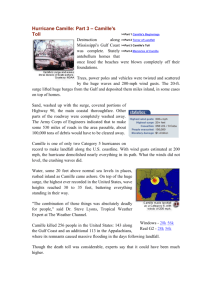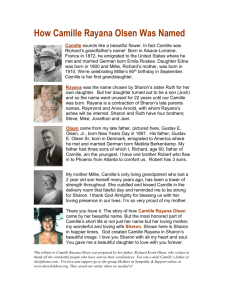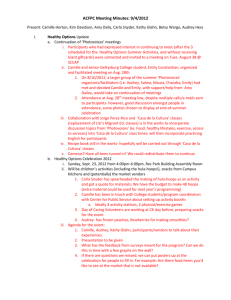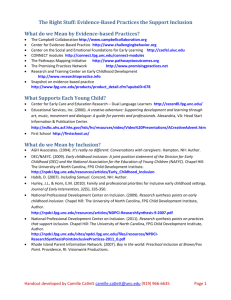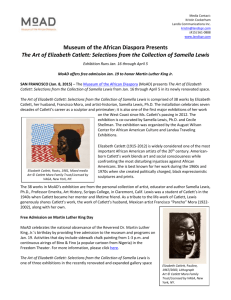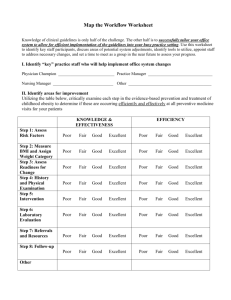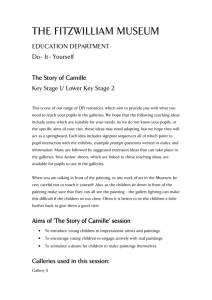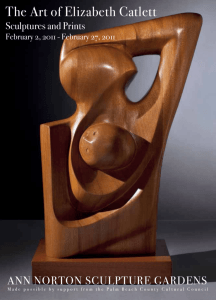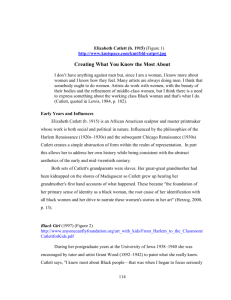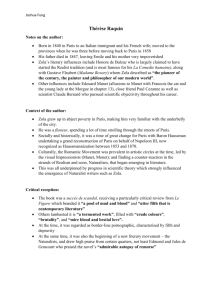Impact of Diversity handout
advertisement
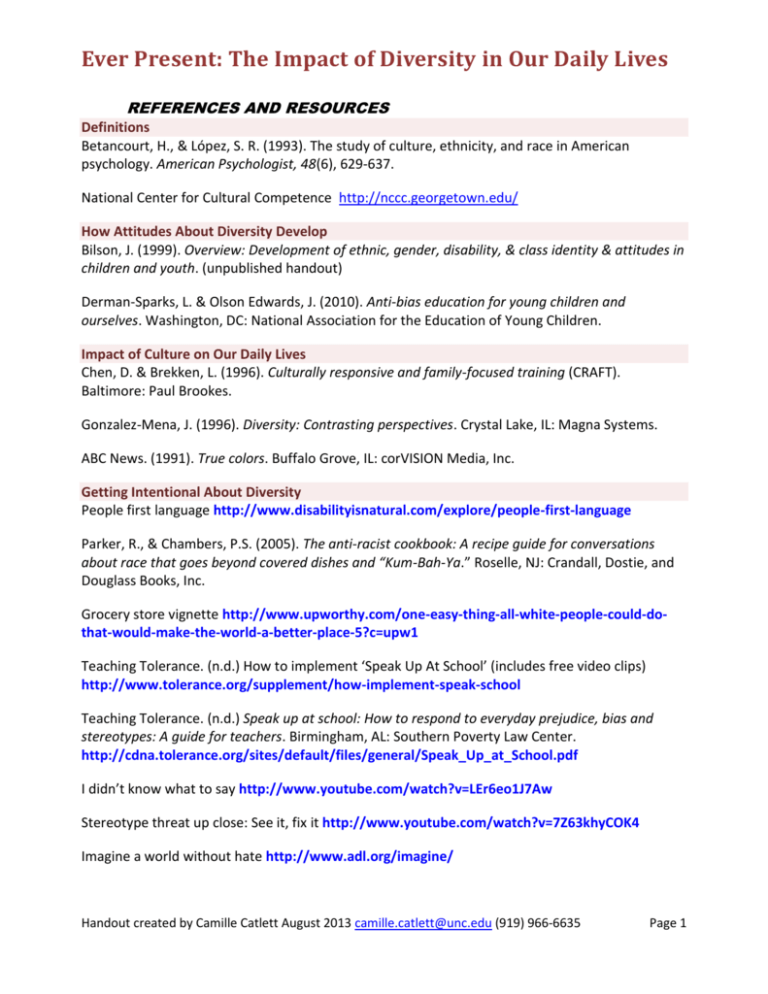
Ever Present: The Impact of Diversity in Our Daily Lives REFERENCES AND RESOURCES Definitions Betancourt, H., & López, S. R. (1993). The study of culture, ethnicity, and race in American psychology. American Psychologist, 48(6), 629-637. National Center for Cultural Competence http://nccc.georgetown.edu/ How Attitudes About Diversity Develop Bilson, J. (1999). Overview: Development of ethnic, gender, disability, & class identity & attitudes in children and youth. (unpublished handout) Derman-Sparks, L. & Olson Edwards, J. (2010). Anti-bias education for young children and ourselves. Washington, DC: National Association for the Education of Young Children. Impact of Culture on Our Daily Lives Chen, D. & Brekken, L. (1996). Culturally responsive and family-focused training (CRAFT). Baltimore: Paul Brookes. Gonzalez-Mena, J. (1996). Diversity: Contrasting perspectives. Crystal Lake, IL: Magna Systems. ABC News. (1991). True colors. Buffalo Grove, IL: corVISION Media, Inc. Getting Intentional About Diversity People first language http://www.disabilityisnatural.com/explore/people-first-language Parker, R., & Chambers, P.S. (2005). The anti-racist cookbook: A recipe guide for conversations about race that goes beyond covered dishes and “Kum-Bah-Ya.” Roselle, NJ: Crandall, Dostie, and Douglass Books, Inc. Grocery store vignette http://www.upworthy.com/one-easy-thing-all-white-people-could-dothat-would-make-the-world-a-better-place-5?c=upw1 Teaching Tolerance. (n.d.) How to implement ‘Speak Up At School’ (includes free video clips) http://www.tolerance.org/supplement/how-implement-speak-school Teaching Tolerance. (n.d.) Speak up at school: How to respond to everyday prejudice, bias and stereotypes: A guide for teachers. Birmingham, AL: Southern Poverty Law Center. http://cdna.tolerance.org/sites/default/files/general/Speak_Up_at_School.pdf I didn’t know what to say http://www.youtube.com/watch?v=LEr6eo1J7Aw Stereotype threat up close: See it, fix it http://www.youtube.com/watch?v=7Z63khyCOK4 Imagine a world without hate http://www.adl.org/imagine/ Handout created by Camille Catlett August 2013 camille.catlett@unc.edu (919) 966-6635 Page 1 Handout created by Camille Catlett August 2013 camille.catlett@unc.edu (919) 966-6635 Page 2 Handout created by Camille Catlett August 2013 camille.catlett@unc.edu (919) 966-6635 Page 3 Communication Tennis Balls Easy messages can be called “tennis ball” messages. They are easily tossed and caught. They help form the foundation of relationships. Playing catch is where one learns the other’s style. Slippery Eggs Difficult messages can be called “slippery egg” messages. They are more difficult to toss and catch. It is best to take care of these messages – tossing them gently to be sure the catcher receives the communication as intended. Even the best relationships have slippery egg messages from time to time. Adopted from: The Leading Edge, National Association for the Education of Young Children (1998) Handout created by Camille Catlett August 2013 camille.catlett@unc.edu (919) 966-6635 Page 4 I. Discovering Your Personal Culture A. Create your cultural genogram 1. Spend 5-10 minutes thinking about the many groups you belong to, such as race, gender, nationality, religion, sexual orientation, disability, ethnicity, class, and family relationships. 2. Add a circle for each piece of your personal cultural identity – for example, woman, sister, wife, mother, African American, middle class, and so forth. 3. Which of these aspects of your personal culture are most important in shaping your life and decisions? How has each identity contributed to your view of yourself and people who share that identity, as well as those who do not share that identity? How has each identity contributed to your view of the world? 4. Share your cultural genogram with another person. Possible Aspects of Personal Culture to Consider Place of birth Birth order Residence during childhood or adolescence Gender Number of children in family Religion Socioeconomic status Disability or medical conditions Racial or ethnic group Languages Dialects Level of education You Handout created by Camille Catlett August 2013 camille.catlett@unc.edu (919) 966-6635 Page 5 B. Discover a new kind of family tree 1. For each section of the tree, identify an example that highlights your personal culture. An example of a control system might be that the “father” in your family was the prevailing authority. An example of a rite or ritual might be traditions around birthdays, holidays or seasons. 2. If it is comfortable, check out your answers with other members of your family. Would everyone agree with your examples? Handout created by Camille Catlett August 2013 camille.catlett@unc.edu (919) 966-6635 Page 6
